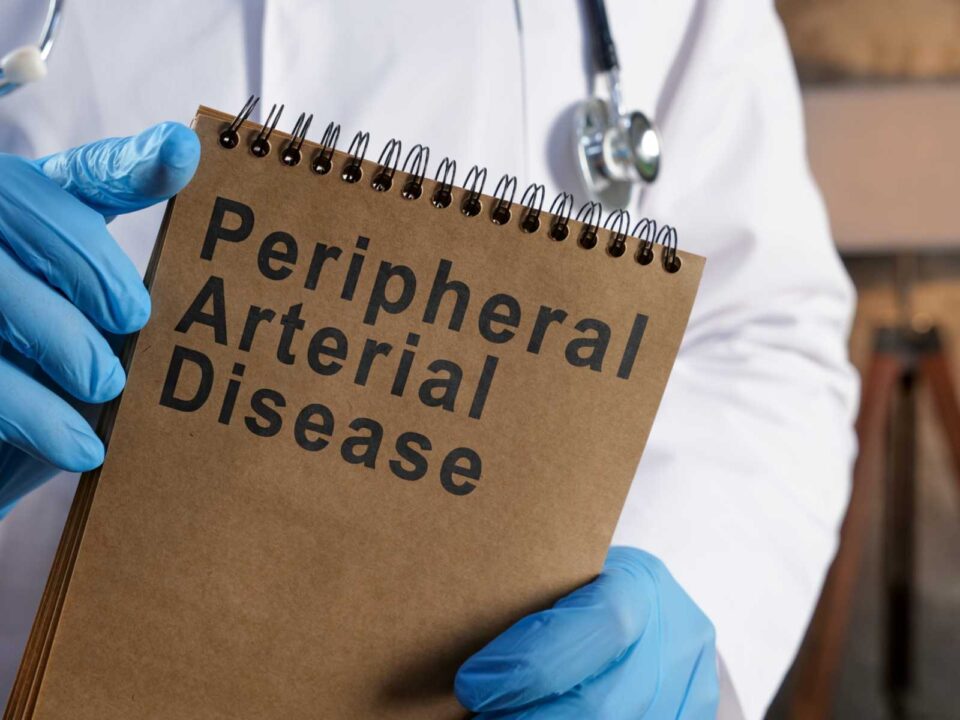Peripheral Artery Disease (PAD)
Treating Peripheral Artery Disease in Sugar Land, TX
Circulatory health conditions affect many people. Among the most common of these conditions is peripheral artery disease (PAD). If you suffer from this disease or worry about your risks of developing it, the team at Complete Cardiology Care is here to help. We are leaders in assessing, diagnosing, and treating peripheral artery disease in Sugar Land, TX patients. Whether you need a simple lifestyle adjustment, medication, or surgery, our team will provide the guidance and support you need to live happily and healthily. You can rely on us to relieve your symptoms and improve your overall quality of life.
CONTACT US

What is Peripheral Artery Disease? What Causes It?
Peripheral artery disease (PAD), or peripheral arterial or vascular disease, is a circulatory condition where the arteries in one or more legs narrow or become clogged. It is primarily caused by atherosclerosis, a buildup of plaque and fatty deposits. When these materials build up, they make it more difficult or impossible for the arteries to allow blood flow, causing pain, discomfort, and dysfunction. PAD is often easily treatable and manageable when localized. But if it is allowed to spread, it can lead to other cardiac complications and risks.
What Are Peripheral Artery Disease Symptoms?
The signs and symptoms of PAD may vary depending on the condition’s extent and severity. If you notice one or more of the following occurring chronically, we recommend visiting a cardiologist for testing and diagnosis:
- Leg Pain (Claudication): Intense pain, such as cramping, when walking, running, or climbing stairs.
- Sores: Wounds or blisters on your lower legs, feet, and toes.
- Weakness: Numbness, fatigue, or reduced ability to use your legs.
- Skin Discoloration: Color changes in your legs, feet, or toes.
- Hair Loss: Falling hair, or the inability to grow hair on the legs and feet.
What Are the Risk Factors of Peripheral Artery Disease?
Some of the risks that can increase the chances of developing PAD include, but are not limited to, the following:
- High Blood Pressure: Over time, high blood pressure levels can push against the arterial walls and damage them.
- Smoking: Heavy or regular smokers are at higher risk of developing PAD and damaged blood vessels.
- Obesity: Excessive body fat or weight gain puts pressure on the arteries and may lead to atherosclerosis.
- Family History: If your family members have had a genetic predisposition to the condition, you may also have it.
- Age: Most patients over 50 have a chance of developing PAD, with risks worsening in the 60s and 70s.
- High Cholesterol: Patients with high cholesterol have a greater chance of developing plaque in the arteries.
How Do You Diagnose Peripheral Artery Disease?
Our cardiology team performs comprehensive diagnostic testing to evaluate blood flow, arterial clogging, and the overall presence of peripheral artery disease. Here are some of the tests you may undergo:
- Patient History: We’ll start by meeting with you to discuss your family and medical history and any risk factors.
- Physical Examination: Our doctors will assess your legs and feet for symptoms like skin discoloration or sores.
- Ultrasound: Advanced imaging of the arteries may be taken to visualize their blood flow and function.
- Blood Testing: Our team will perform blood tests to evaluate your cholesterol and sugar levels.
- Segmental Pressure Measurements: This pressure test will help us determine where the arterial blockages occur.
- Pulse Volume Recording (PVR): The pulse volume recording will enable us to determine the severity of the blockages.
What Are Your Peripheral Artery Disease Treatments?
Treatment plans for peripheral artery disease can include many differing techniques, methods, and solutions, such as the following:
- Lifestyle Changes and Guidance: We can offer guidance on making healthy lifestyle adjustments, such as getting more exercise, weight loss, and quitting smoking.
- Medications: Our team can recommend antiplatelets and cholesterol medications to reduce arterial blockage and improve blood flow.
- Surgical and Noninvasive Treatments: If you have severe PAD, we may recommend surgical procedures like angioplasties, stents, or bypass surgeries.
- Cardiological Care: Besides PAD treatments, we offer other cardiology services to treat and manage related heart and blood flow conditions.
Get Treated for Peripheral Artery Disease (PAD) Today
Though peripheral artery disease can be minor and easily manageable in its early stages, getting treated for it is crucial. Doing so will prevent it from worsening and leading to further complications. The team at Complete Cardiology Care has years of experience treating heart and circulatory conditions. Besides PAD, we also treat heart failure, high cholesterol, and high blood pressure. We’ll begin by learning more about your health history, current condition, and goals, enabling us to develop a customized care plan. Contact us today to get started on enhancing your heart health, blood flow, and overall well-being.
